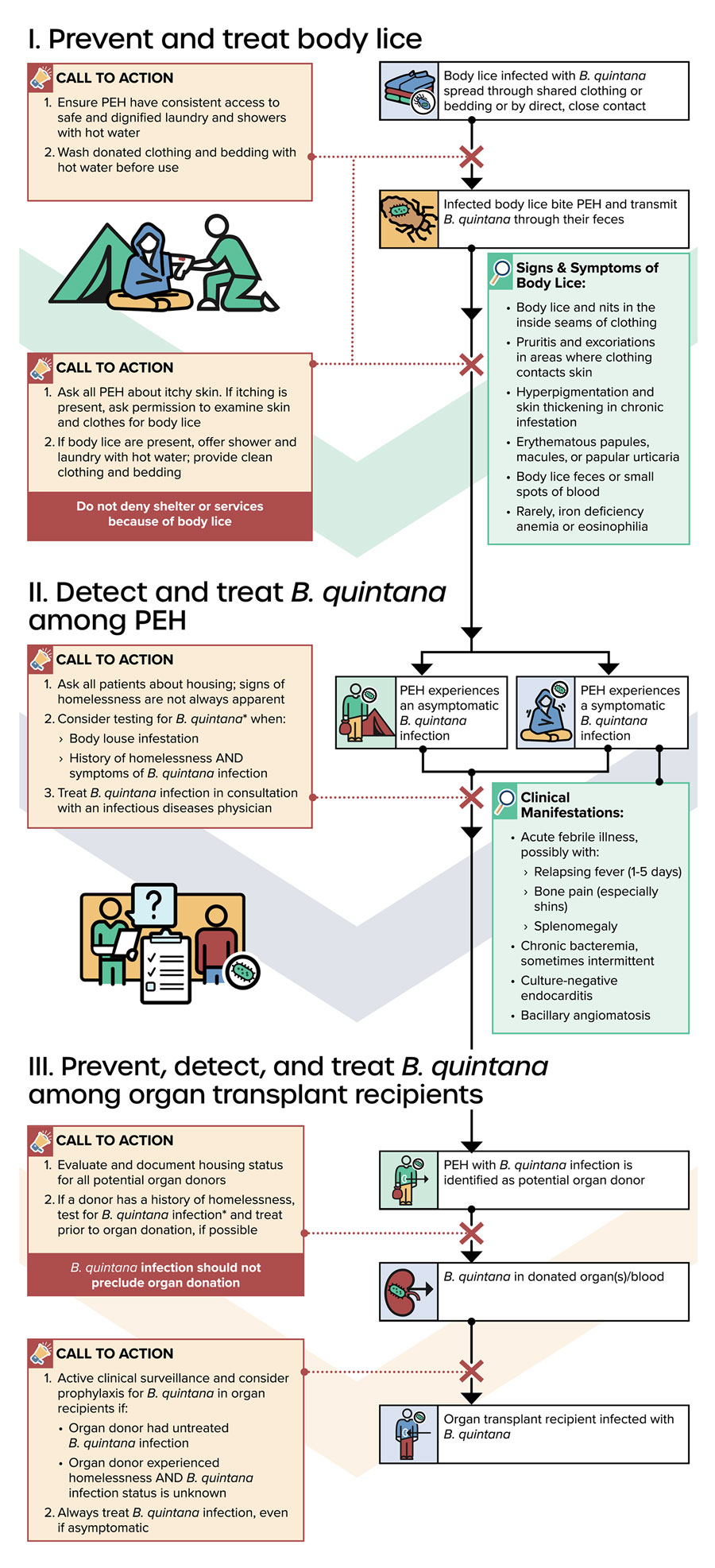Volume 30, Number 12—December 2024
Perspective
Homelessness and Organ Donor–Derived Bartonella quintana Infection
Figure 3

Figure 3. Conceptual framework for reducing transmission of Bartonella quintana in the United States among PEH and among organ transplant recipients through universal access to hygiene services, prevention and treatment of body lice infestation, and early diagnosis and treatment of B. quintana infection. Diagnostic testing for B. quintana includes bacterial culture with prolonged incubation time (minimum 14 days), serology, and molecular diagnostic methods (e.g., PCR or microbial cell-free DNA testing). PEH, persons experiencing homelessness.
Page created: October 25, 2024
Page updated: November 26, 2024
Page reviewed: November 26, 2024
The conclusions, findings, and opinions expressed by authors contributing to this journal do not necessarily reflect the official position of the U.S. Department of Health and Human Services, the Public Health Service, the Centers for Disease Control and Prevention, or the authors' affiliated institutions. Use of trade names is for identification only and does not imply endorsement by any of the groups named above.